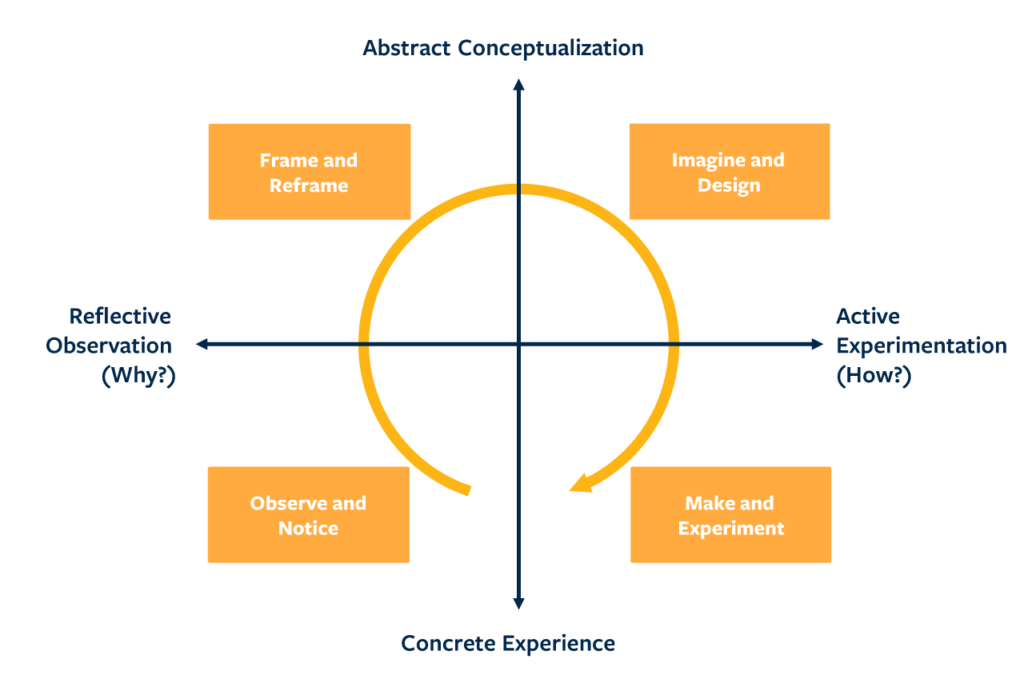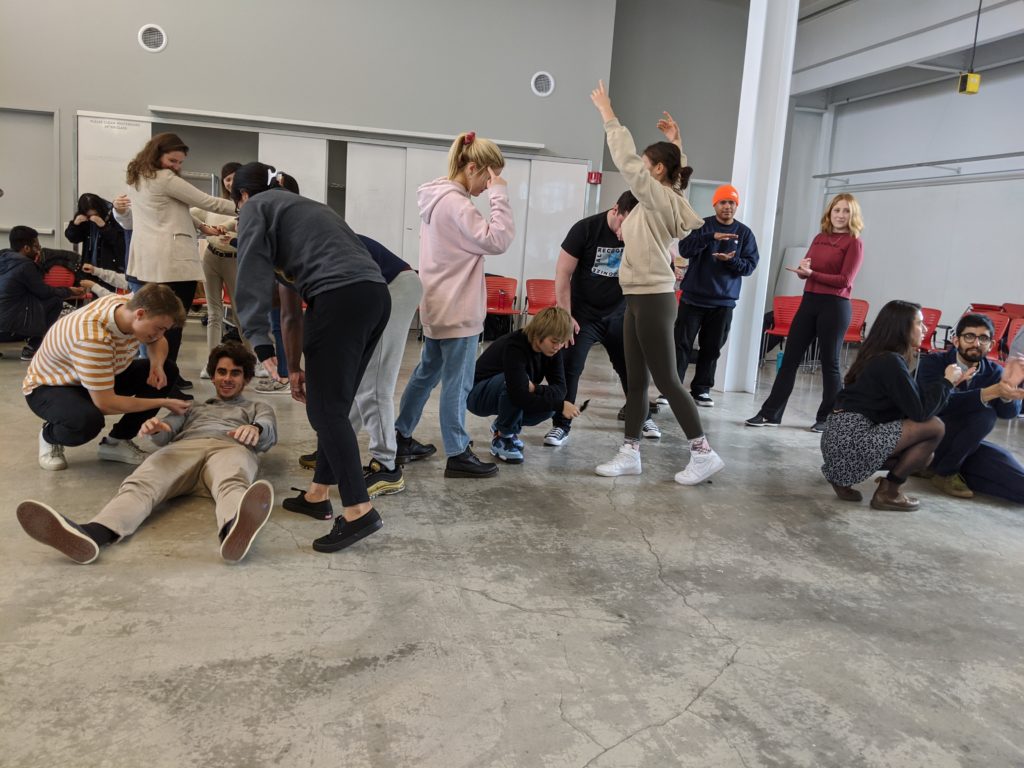SCET awards $50,000 in grants to support innovation and changemakers on campus
The Sutardja Center for Entrepreneurship & Technology at the University of California, Berkeley has just awarded $50,000 to three UC Berkeley courses to support innovation on campus and build new connections to share pedagogy best practices.
The Instructional Innovation Grants will help SCET share insights learned from its award-winning Berkeley Method of Entrepreneurship curriculum, including its focus on helping students understand the importance of mindsets and behaviors in the innovation process. The grants will also help SCET connect with and learn from new faculty outside of engineering to see how they teach innovation to students, reach a broader set of students with its pedagogy, and build a more diverse network of innovators on campus to form new interdisciplinary teaching teams, with new perspectives.
The 2020 SCET Instructional Innovation Grants course recipients include:
- “Data, Prediction, and Law” (Legal Studies 123) taught by Jonathan Marshall,
- “Arts Entrepreneurship” (L&S 105) taught by Richard Andrews,
- and “Collaborative Innovation” (UGBA 190C/TDPS 100/ART 100) taught by Sara Beckman, Lisa Wymore, and Greg Niemeyer.
“Innovation is too often associated with business and technology which unfortunately excludes those who are innovating in other domains. The Sutardja Center believes that everyone must play a role in how we develop solutions for today’s problems,” says SCET Chief Learning Officer, Ken Singer. “The CEO of the next big idea may be sitting in an art class or a history class with a vision looking for ways to achieve it. Through these grants, we hope to inspire these students to take the lead in creating a human-centric future.”
The first course, Arts Entrepreneurship, is the only course at UC Berkeley where students are presented with the opportunity to develop a new business concept based on their own relationship to the arts — and general creative practice, says Richard Andrews, instructor for the course.
In the course, students present business concepts, with a focus on how their products and services create value. Students receive critical feedback from each other and from experienced business founders, which often leads them to change their strategy or approach to launching their arts venture. Students also examine case studies to learn about successful instances of arts-focused ventures, and develop creative marketing messages to reach their target audiences.
“At the end of chapter 8 in my new textbook, there is a section on Future Trends in Arts Entrepreneurship. In addition to the social benefits model, students are introduced to a number of innovative areas to explore, including creative placemaking, arts entrepreneurship and science, artists and consumers as co-creators, and ‘entrepreneurial bricolage,’” says Andrews. “These topics, along with explorations of cultural policy development in the U.S. and abroad, inspire students to invent an arts organization that will have lasting impact while supporting the founder(s) the long term.”
The second course, “Data, Prediction, and Law” allows students to explore different data sources that scholars and government officials use to make generalizations and predictions in the realm of law. The course introduces critiques of predictive techniques often used in the field. Students apply the statistical and Python programming skills from Foundations of Data Science to examine a traditional social science dataset, “big data” related to law, and legal text data.
“The course is an ambitious survey of how prediction is used and misused in the legal field,” says instructor Jon Marshall who will be teaching the course for the third time this semester. “But one of the main purposes of the course is to give students hands-on experience in actually using data science tools to produce analyses, critiques, and visualizations.”
The third course, “Collaborative Innovation” integrates business, theater/dance performance and art practice disciplines to help students develop inner, other and outer focus as they practice tackling the design of a future world in which we all want to live, learn and work. In short, they learn to imagine worlds that use technology and increasing interconnectivity for good, avoiding creating Black Mirror episodes. The course develops students’ mindsets, skillsets and toolsets in the four capabilities associated with the Innovation Cycle: observing/noticing in the concrete world; framing/reframing the challenges to be addressed; imagining/designing alternative futures; and making/experimenting to evaluate risks and get feedback on their ideas.

“Our class is a ‘flipped classroom’, ‘hybrid learning’ model class,” says Dr. Sara Beckman, who has been co-instructing the course since its inception as a Big Ideas course five years ago. “Students read materials, watch short videos and complete individual applications of the learning before they come to class. Then they spend their class time interacting with one another in a series of exercises that allow them to apply their pre-class work as teams to a variety of challenges.”
“The class is taught in a studio format with 6 hours of in-class time each week. This provides ample time for students to work in teams without having to scramble to find shared availability outside the class. We position ourselves (the course faculty) as “guides on the side” rather than “sages on the stage”, and the six hours of facetime we have with students each week gives us the opportunity to interact with and coach students as they learn how to engage in the Innovation Cycle.”
“These Instructional Innovation Grants are a win-win for everyone involved,” says Ikhlaq Sidhu, director of the Sutardja Center for Entrepreneurship & Technology. “We not only have the opportunity to support innovation activity at Berkeley, but we also have the chance to connect with new faculty and students across campus, and enrich our own programs.”
The Sutardja Center for Entrepreneurship & Technology at the University of California, Berkeley has just awarded $50,000 to three UC Berkeley courses to support innovation on campus and build new connections to share pedagogy best practices.
The Instructional Innovation Grants will help SCET share insights learned from its award-winning Berkeley Method of Entrepreneurship curriculum, including its focus on helping students understand the importance of mindsets and behaviors in the innovation process. The grants will also help SCET connect with and learn from new faculty outside of engineering to see how they teach innovation to students, reach a broader set of students with its pedagogy, and build a more diverse network of innovators on campus to form new interdisciplinary teaching teams, with new perspectives.
The 2020 SCET Instructional Innovation Grants course recipients include:
- “Data, Prediction, and Law” (Legal Studies 123) taught by Jonathan Marshall,
- “Arts Entrepreneurship” (L&S 105) taught by Richard Andrews,
- and “Collaborative Innovation” (UGBA 190C/TDPS 100/ART 100) taught by Sara Beckman, Lisa Wymore, and Greg Niemeyer.
“Innovation is too often associated with business and technology which unfortunately excludes those who are innovating in other domains. The Sutardja Center believes that everyone must play a role in how we develop solutions for today’s problems,” says SCET Chief Learning Officer, Ken Singer. “The CEO of the next big idea may be sitting in an art class or a history class with a vision looking for ways to achieve it. Through these grants, we hope to inspire these students to take the lead in creating a human-centric future.”
The first course, Arts Entrepreneurship, is the only course at UC Berkeley where students are presented with the opportunity to develop a new business concept based on their own relationship to the arts — and general creative practice, says Richard Andrews, instructor for the course.
In the course, students present business concepts, with a focus on how their products and services create value. Students receive critical feedback from each other and from experienced business founders, which often leads them to change their strategy or approach to launching their arts venture. Students also examine case studies to learn about successful instances of arts-focused ventures, and develop creative marketing messages to reach their target audiences.
“At the end of chapter 8 in my new textbook, there is a section on Future Trends in Arts Entrepreneurship. In addition to the social benefits model, students are introduced to a number of innovative areas to explore, including creative placemaking, arts entrepreneurship and science, artists and consumers as co-creators, and ‘entrepreneurial bricolage,’” says Andrews. “These topics, along with explorations of cultural policy development in the U.S. and abroad, inspire students to invent an arts organization that will have lasting impact while supporting the founder(s) the long term.”
The second course, “Data, Prediction, and Law” allows students to explore different data sources that scholars and government officials use to make generalizations and predictions in the realm of law. The course introduces critiques of predictive techniques often used in the field. Students apply the statistical and Python programming skills from Foundations of Data Science to examine a traditional social science dataset, “big data” related to law, and legal text data.
“The course is an ambitious survey of how prediction is used and misused in the legal field,” says instructor Jon Marshall who will be teaching the course for the third time this semester. “But one of the main purposes of the course is to give students hands-on experience in actually using data science tools to produce analyses, critiques, and visualizations.”
The third course, “Collaborative Innovation” integrates business, theater/dance performance and art practice disciplines to help students develop inner, other and outer focus as they practice tackling the design of a future world in which we all want to live, learn and work. In short, they learn to imagine worlds that use technology and increasing interconnectivity for good, avoiding creating Black Mirror episodes. The course develops students’ mindsets, skillsets and toolsets in the four capabilities associated with the Innovation Cycle: observing/noticing in the concrete world; framing/reframing the challenges to be addressed; imagining/designing alternative futures; and making/experimenting to evaluate risks and get feedback on their ideas.

“Our class is a ‘flipped classroom’, ‘hybrid learning’ model class,” says Dr. Sara Beckman, who has been co-instructing the course since its inception as a Big Ideas course five years ago. “Students read materials, watch short videos and complete individual applications of the learning before they come to class. Then they spend their class time interacting with one another in a series of exercises that allow them to apply their pre-class work as teams to a variety of challenges.”
“The class is taught in a studio format with 6 hours of in-class time each week. This provides ample time for students to work in teams without having to scramble to find shared availability outside the class. We position ourselves (the course faculty) as “guides on the side” rather than “sages on the stage”, and the six hours of facetime we have with students each week gives us the opportunity to interact with and coach students as they learn how to engage in the Innovation Cycle.”
“These Instructional Innovation Grants are a win-win for everyone involved,” says Ikhlaq Sidhu, director of the Sutardja Center for Entrepreneurship & Technology. “We not only have the opportunity to support innovation activity at Berkeley, but we also have the chance to connect with new faculty and students across campus, and enrich our own programs.”


